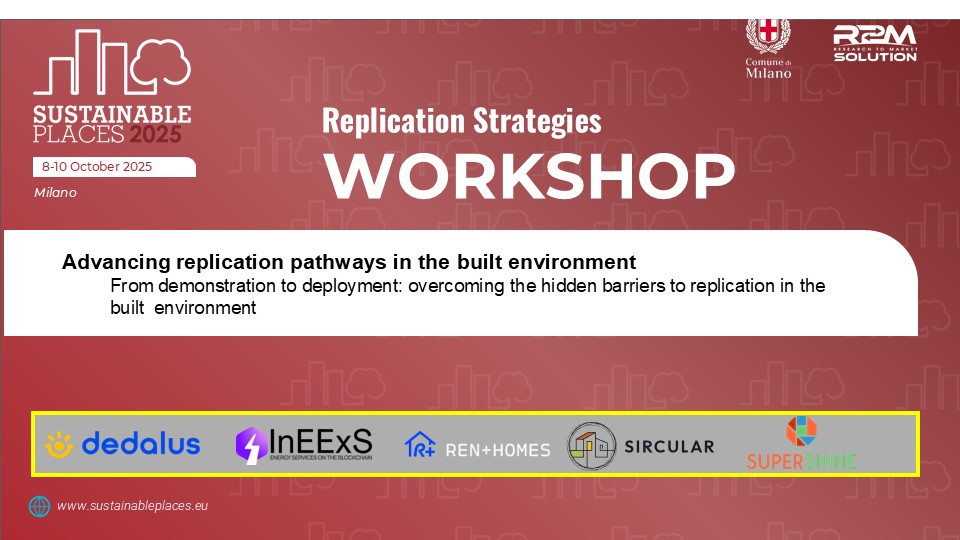From demonstration to deployment: Bridging the gap to market uptake

Despite growing pressure to accelerate the transition to a climate-neutral, circular built environment, many EU-funded innovations remain confined to demonstration pilots. Replication strategies are often included as checkboxes rather than deeply embedded into project design. Yet, real-world replication is complex: it requires aligning technological solutions with socio-economic conditions, local governance, community acceptance, policy timing, and more.
This session, led by ICONS and featuring five Horizon Europe projects, explored why replication often fails and what can be done to make it work. Instead of presenting another methodology in abstract, it took participants on a story-driven journey through the barriers, breakthroughs, and lessons emerging from real-world pilots across Europe.
The session unfolded in two parts. The first part introduced common replication myths and challenges and presented a flexible framework to support meaningful scale-up, rooted in ICONS’ cross-project experience and designed to be applied by policymakers, cities, and project developers alike. The second part brought the field to the stage.
Representatives from five flagship projects — DEDALUS, SUPERSHINE, InEEXs, RENplusHOMES, and SIRCULAR — shared candid insights into how replication was being approached, prepared, or tested in their respective contexts. Whether at the early stages of planning or already engaging in uptake activities, each project reflected on what worked, what remained challenging, and what caught them by surprise. From shifting policy landscapes to community resistance, from digital readiness to business model mismatch, these contributions shed light on replication as a system-level challenge, not a linear or technical step.
By bridging methodology and practice, the session concluded with a discussion on how EU-funded innovation could better prepare for post-project deployment and generate tangible benefits for the built environment across Europe. Throughout the session, delegates actively contributed via a live mapping exercise of enablers and blockers (Miro or Slido), guided by audience questions tied to key replication moments in each project, as well as interactive polling to compare perceptions and realities.
Key takeaways:
A fresh, grounded perspective on replication from real-life demos
A shared map of what enables or blocks replication today
Connections with like-minded practitioners facing similar challenges
